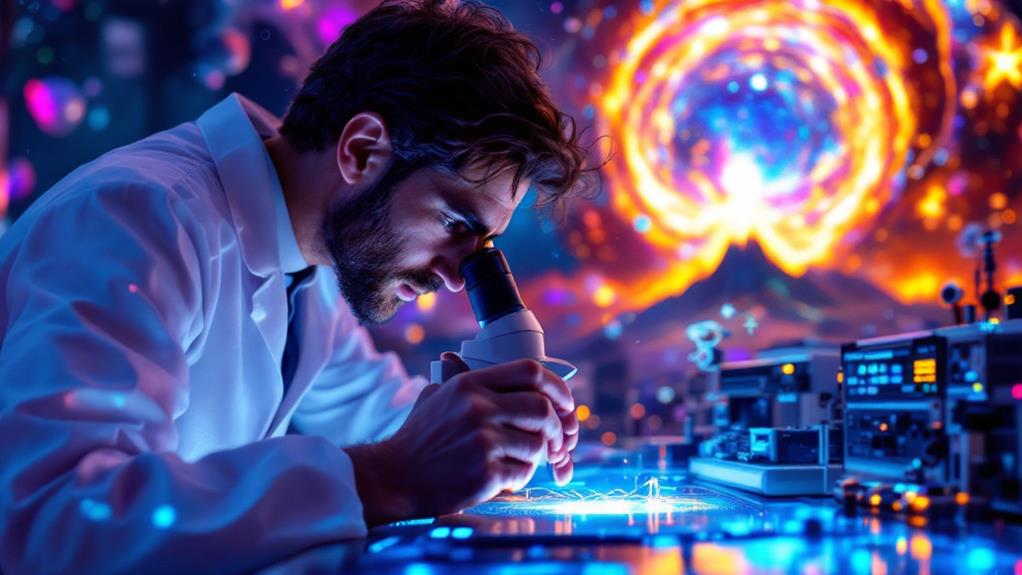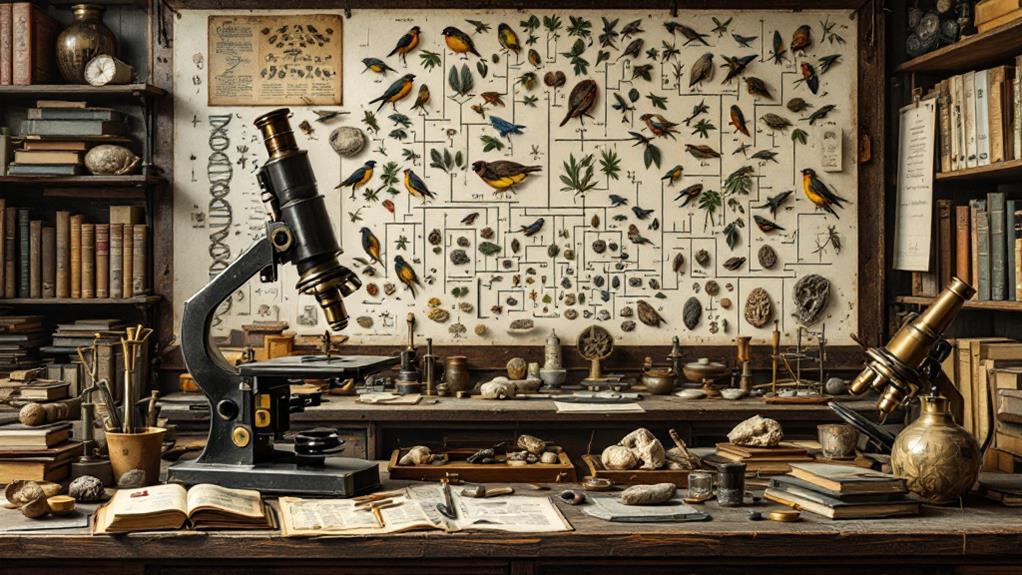Interesting Facts About Richard Feynman: The Life of a Brilliant Physicist
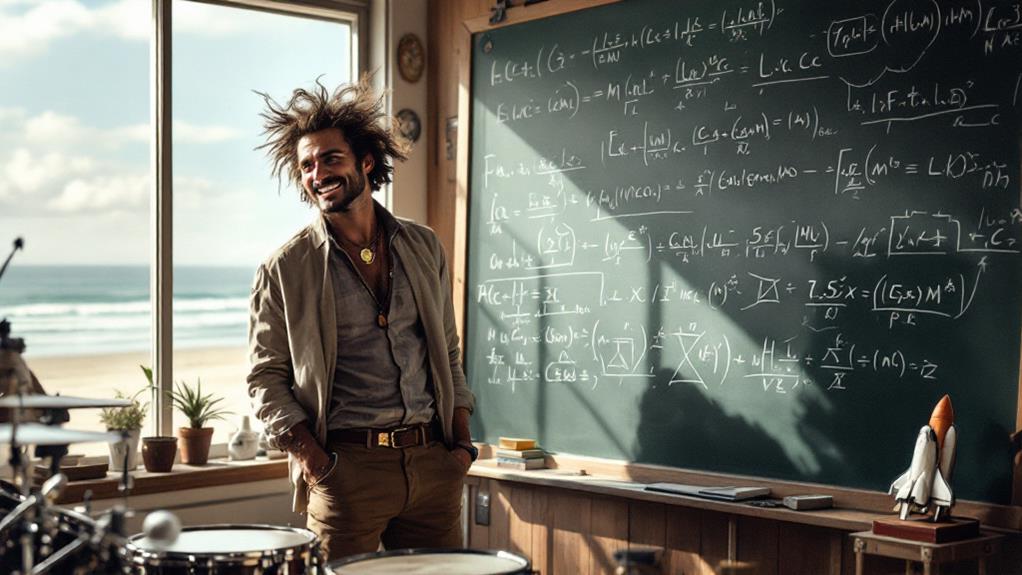
Richard Feynman was more than just a brilliant physicist. He was a bongo-playing Nobel laureate who cracked safes at Los Alamos during the Manhattan Project. His Feynman Diagrams revolutionized quantum electrodynamics, while his expeditions in sensory deprivation investigated consciousness. Feynman became a national hero during the Challenger disaster investigation, using his clarity to explain complex issues. As a polymath, he pursued artistic talents like painting and lock-picking. His unorthodox approach to education emphasized hands-on learning and simplifying complex ideas. Feynman's multifaceted life and unconventional mindset make him one of the 20th century's most fascinating figures. Uncover the surprising depths of this extraordinary scientist's life.
The Bongo-Playing Nobel Laureate
Eccentricity often accompanies genius, and Richard Feynman was no exception. This brilliant physicist, renowned for his pioneering work in quantum electrodynamics, had a surprising passion that set him apart from his peers: playing the bongo drums.
You might wonder how a Nobel Prize-winning scientist found time for such an unconventional hobby. Feynman's love for bongo drums began during his time working on the Manhattan Project. He'd often practice late into the night, much to the chagrin of his neighbors. As his skill improved, he started giving impromptu bongo drum performances at various gatherings and parties.
Feynman's musical inclinations weren't limited to bongos. He also played the frigideira, a Brazilian percussion instrument, and even performed with a samba school during Brazil's Carnival. These musical pursuits weren't just a distraction; they reflected Feynman's belief in the importance of diverse interests and experiences.
His bongo-playing became so well-known that it became part of his public persona. It showcased his carefree nature and challenged the stereotypical image of the stuffy, one-dimensional scientist. Feynman proved that brilliance and playfulness could coexist, inspiring future generations of scientists to welcome their own quirks and passions.
Cracking Safes at Los Alamos
While Feynman's bongo-playing showcased his playful side, his time at Los Alamos during the Manhattan Project revealed another unexpected skill: safecracking. You might wonder how a brilliant physicist became adept at cracking safes. It all started as a challenge to test the security of classified documents.
Feynman's codebreaking skills and logical mind made him a natural at this task. He'd study the mechanics of locks, listen for subtle clicks, and devise ingenious methods to bypass security measures. His wartime contributions weren't limited to theoretical physics; he became the go-to person for accessing locked files and cabinets.
Feynman's codebreaking skills and logical mind made him a natural at this endeavor. He'd study the mechanics of locks, listen for subtle clicks, and devise ingenious methods to bypass security measures. His wartime contributions weren't limited to theoretical physics; he became the go-to person for accessing locked files and cabinets.
This unique talent not only amused Feynman but also highlighted the importance of strong security protocols in sensitive research facilities. It's a demonstration of his versatile intellect and his ability to apply scientific thinking to practical problems.
Feynman Diagrams Revolutionize Physics
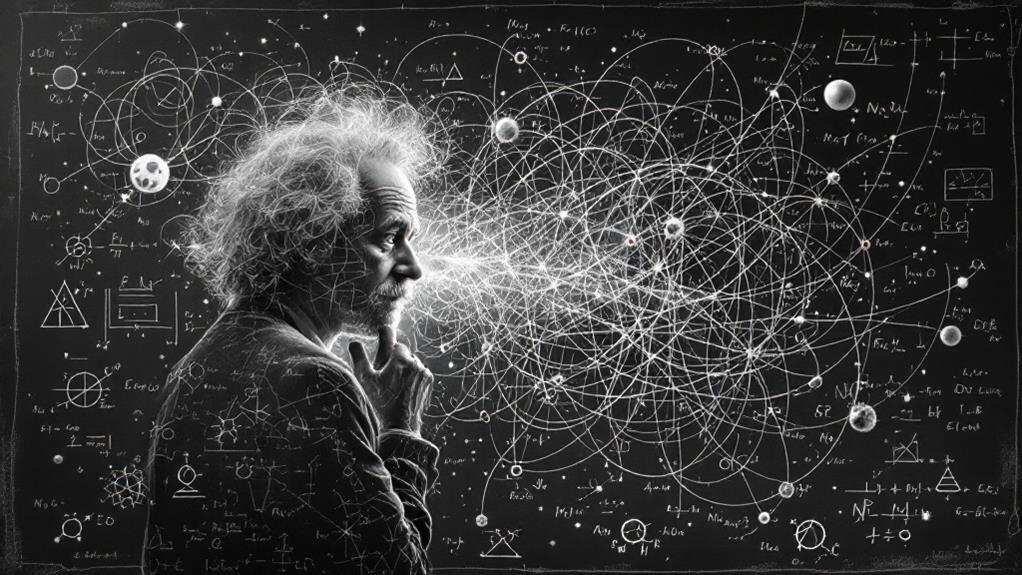
How did a simple visual tool revolutionize the field of quantum electrodynamics? Richard Feynman's iconic illustrations, introduced in the late 1940s, remodeled the way physicists understand and calculate particle interactions.
Feynman diagrams provide a visual representation of complex mathematical equations in quantum electrodynamics. They allow you to see how particles interact, exchange energy, and change over time. These diagrams use simple lines and shapes to represent particles and their behaviors, making it easier to grasp abstract concepts.
You'll find that Feynman diagrams aren't just attractive images; they're powerful problem-solving tools. They simplify calculations that would otherwise be incredibly time-consuming and error-prone. By following a set of rules associated with these diagrams, you can quickly determine the probability of various particle interactions.
The impact of Feynman diagrams extends beyond quantum electrodynamics. They've become an essential tool in particle physics, helping scientists predict and interpret experimental results. Today, you'll see these diagrams used in various fields of physics, from studying subatomic particles to exploring the behavior of entire galaxies.
Adventures in Sensory Deprivation
Richard Feynman's curiosity led him to investigate the limits of human perception through sensory deprivation experiments. You might be surprised to learn that this renowned physicist immersed himself in the world of altered mental states and sensory exploration. Feynman's ventures in sensory deprivation tanks revealed fascinating insights into the human mind and consciousness.
During his experiments, Feynman experienced:
- Vivid hallucinations
- Time distortion
- Heightened self-awareness
- Enhanced creativity
- Profound relaxation
These experiences sparked Feynman's interest in the connection between physics and consciousness. He'd often discuss how the mind could create reality in the absence of sensory input. You'll find that Feynman's approach to sensory deprivation was both scientific and playful, as he sought to understand the nature of perception and reality.
Feynman's explorations in this field weren't widely known during his lifetime, but they've since gained recognition as part of his diverse scientific interests. His willingness to push boundaries and probe unconventional ideas set him apart from many of his contemporaries. You can see how these experiences influenced his unique perspective on physics and the nature of reality.
Challenger Disaster Investigation Hero
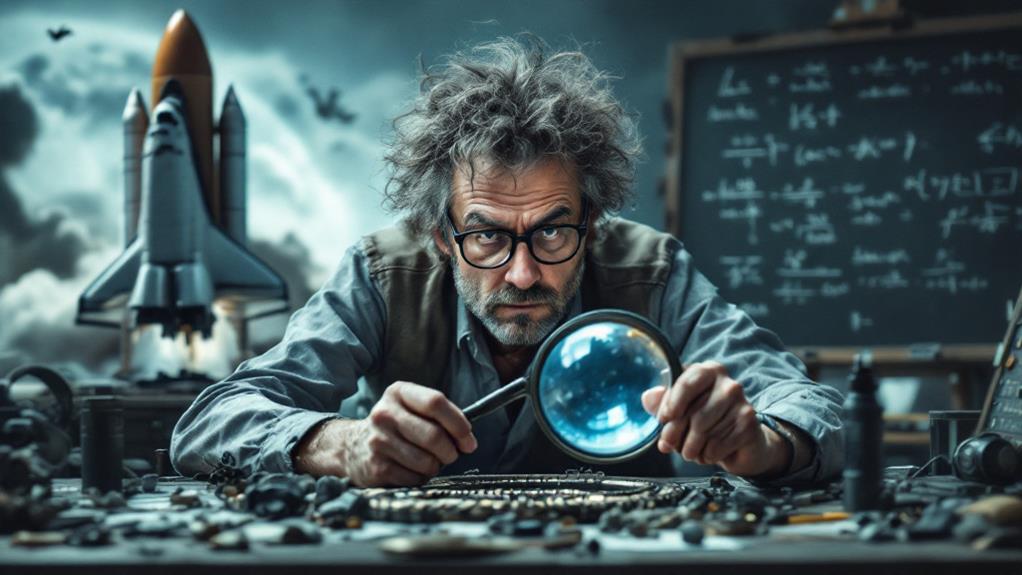
Many know Richard Feynman for his contributions to physics, but his role in the Challenger disaster investigation solidified his status as a scientific hero. You might recall the tragic explosion of the space shuttle Challenger in 1986, which shocked the nation and led to a thorough investigation.
Feynman's involvement in the Rogers Commission, tasked with uncovering the cause of the disaster, was crucial. He employed novel investigative techniques that set him apart from other commission members. You'd be impressed by his hands-on approach, which included dunking O-ring material in ice water to demonstrate its loss of resilience in cold temperatures.
His challenger disaster testimony was a masterclass in clear scientific communication. Feynman cut through bureaucratic jargon and technical complexities, explaining the failure in terms the public could understand. He famously dropped an O-ring into a glass of ice water during a televised hearing, instantly demonstrating the root cause of the disaster.
Feynman's unyielding pursuit of truth and his ability to simplify intricate issues made him an indispensable part of the investigation, earning him widespread admiration and respect.
Polymath With Artistic Talents
While most people associate Feynman with his scientific prowess, few are aware of his diverse artistic talents. You might be surprised to learn that this brilliant physicist was also an accomplished artist and musician. Feynman's creative pursuits weren't just hobbies; they were integral to his approach to problem-solving and understanding the world around him.
His artistic talents extended far beyond the concept of science:
- He played bongos and percussion instruments with extraordinary skill
- He learned to draw and paint, creating portraits and sketches
- He mastered the art of lock-picking as a form of mental challenge
- He explored the complexities of Mayan mathematics and hieroglyphs
- He dabbled in creative writing, penning both scientific and personal works
Feynman's musical talents often complemented his scientific endeavors, providing a unique viewpoint on complex problems. He'd frequently use his artistic skills to visualize and simplify intricate concepts in physics. This multifaceted approach to learning and problem-solving also enhanced his engineering projects, allowing him to see connections that others might miss. Feynman's diverse interests and talents truly exemplify the Renaissance ideal of the polymath, demonstrating that creativity and scientific rigor can coexist and even enhance one another.
Unorthodox Approach to Education
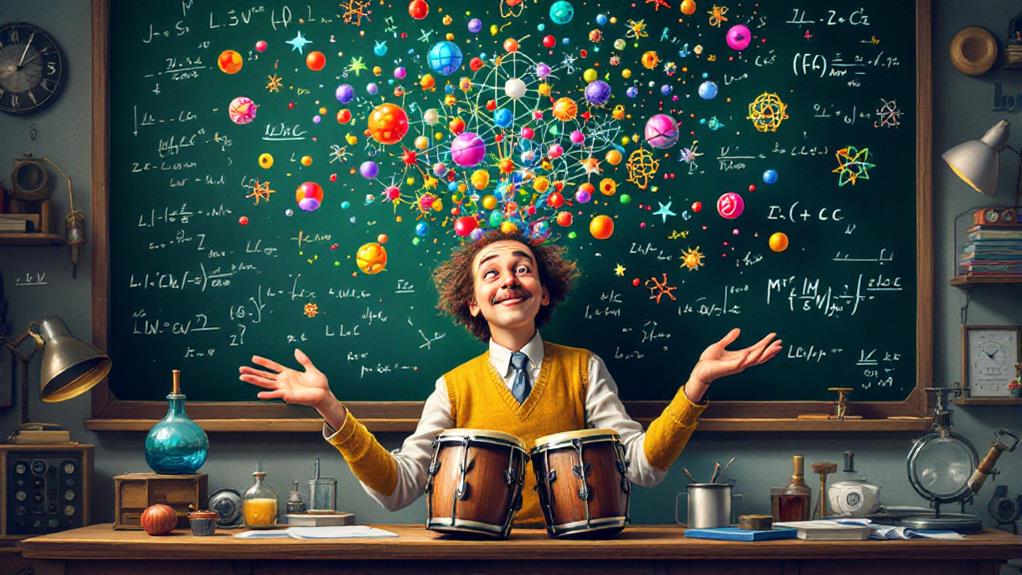
Feynman's unconventional mindset extended beyond his artistic pursuits and into his educational philosophy. He believed that true understanding came from hands-on learning experiences rather than rote memorization. You'll find that his approach to teaching physics was revitalizing different from traditional methods.
As a professor at Caltech, Feynman developed unconventional teaching methods that engaged students in active problem-solving. He'd often challenge them with real-world scenarios, encouraging them to think creatively and apply theoretical concepts practically. His famous "Feynman Technique" involved explaining complex ideas in simple terms, as if teaching a child.
You might be surprised to learn that Feynman advocated for a more interdisciplinary approach to education. He believed that compartmentalizing knowledge limited creativity and understanding. This philosophy led him to investigate various fields outside physics, from biology to computing.
Feynman's lectures, later compiled into "The Feynman Lectures on Physics," became renowned for their clarity and discernment. His ability to make complex concepts accessible has inspired generations of students and educators to adopt a more engaging, hands-on approach to learning.

